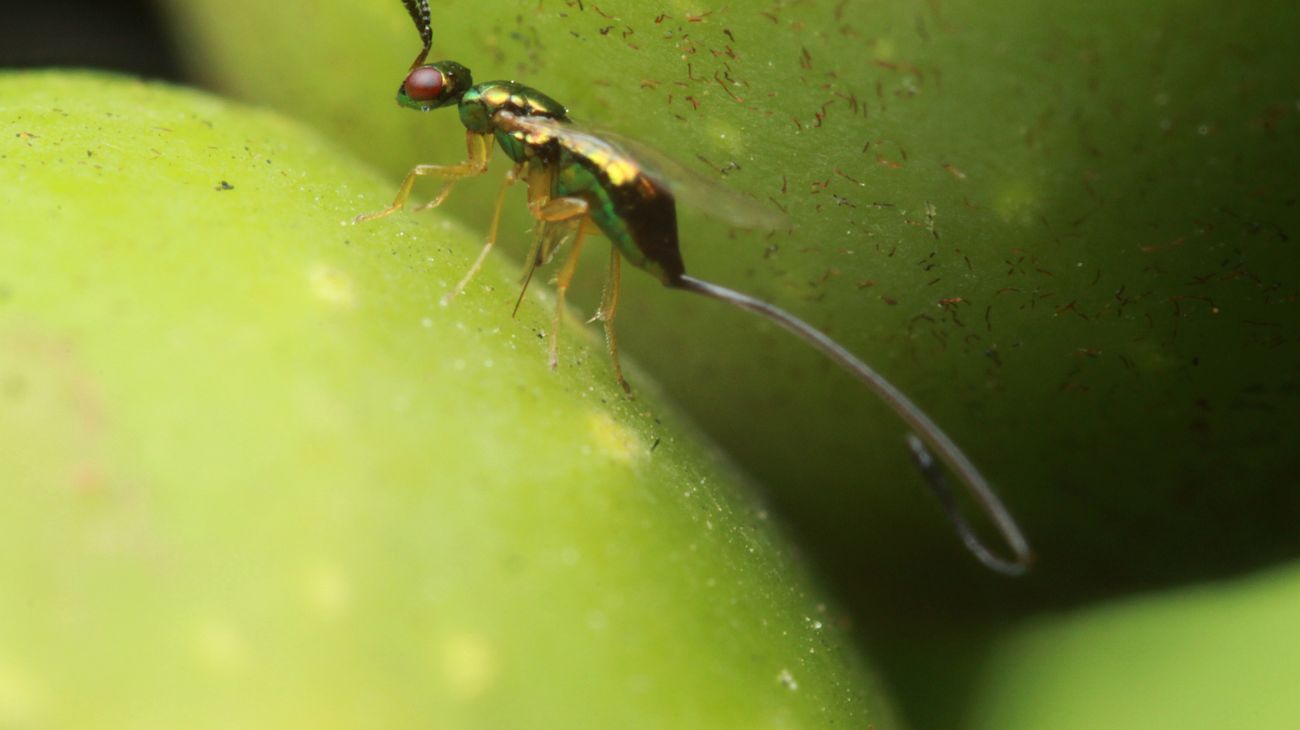If you thought true love was hard to find, try being a fig wasp: you only have the right tree and a small hole to get in!
- Fig wasp, tiny pollinator with enormous impact
- The co-evolution between fig and wasp
- The common fig, a pillar of ecosystems
Fig wasp, tiny pollinator with enormous impact
The fig wasp(Blastophaga psenes) is a tiny insect, only a few millimetres long, but extraordinarily specialised.
Belonging to the family Agaonidae, it is perfectly adapted to the morphology of the fig tree; it has anatomical characteristics that allow it to complete its life cycle inside the syconium, the typical inflorescence (or false fruit!) that we like to eat.
Although it belongs to the group of hymenopterous insects, such as bees and common wasps, it is completely harmless to humans.
It lives in environments characterised by hot, dry summers and mild winters, ideal conditions for both the insect and the host plant.
Originally from the eastern Mediterranean, it then spread throughout the Mediterranean basin, colonising Italy, Spain, southern France, Turkey, North Africa and parts of western Asia.
With the increasing cultivation of figs, it has also been introduced in other regions of the world, such as the USA and Brazil.
The co-evolution between fig and wasp
This interaction between wasp and fig represents an extraordinary example of co-evolution, in which both species depend on each other for survival.
The life cycle of the fig wasp is closely synchronised with the plant.
It all starts when the females lay their eggs inside the inflorescence.
After hatching, the larvae feed on the fig tissue until they reach maturity. The males emerge first and, without ever leaving, fertilise the females inside.
After mating, the males die, while the females emerge from the fruit in search of new inflorescences where they can lay their eggs.
During this journey, they transport pollen from one fig tree to another, contributing to the fertilisation of the flowers and the production of new fruit.
In summary, without the wasp, the plant could not reproduce, and without the fig, the wasp would lose its only nesting environment.
The common fig, a pillar of ecosystems
The common fig(Ficus carica) is a fruit tree belonging to the Moraceae family, known for its ability to adapt to warm and temperate climates.
Originally from the Middle East, it has spread throughout the Mediterranean basin and beyond, becoming a plant symbol of abundance, fertility and knowledge in many cultures.
Ficus carica trees play a key role in forest ecosystems due to their ability to produce fruit consistently throughout the year.
Their fruits are an important food source for many animals, such as birds, mammals and reptiles, which in turn help to disperse the seeds.
The relationship between the fig wasp and these trees is closely interconnected and crucial to the health of the entire ecosystem. These tiny insects, together with the plants they live with, form a complex and vital network that supports entire communities of species.
Play for the planet!
